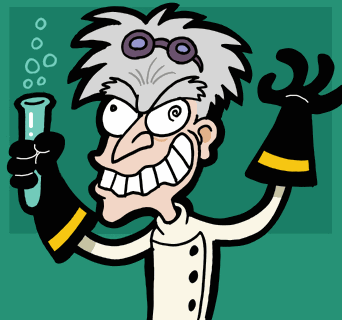Be a mad scientist
This is the tenth post in our 14-week series exploring the 4 Questions and 10 Rules of Strategic Doing, first outlined in this October 2023 blog post. Make sure to ask “What will we do?” before moving onto this next rule. Catch up here.


We sometimes say that the earlier rules/skills of Strategic Doing and agile leadership are more about creativity, but that’s in the eye of the beholder. This one invites each of us to “be a mad scientist.” Not in a Frankenstein kind of way – or even a Doc Brown/Back to the Future way, although there is a sense in which this rule is about putting yourself and your team into a future scenario, by creating a Pathfinder project.
In this rule, we design a small experiment to test out our understanding of what we’re working on and what might move us toward addressing the issue the group’s convened for. In Strategic Doing workshops, we call these “Pathfinder projects” – in the Strategic Doing book we use the term “starting project.” Whatever you call it, the idea is the same. It’s a limited (in both time and scope) exploration that begins to lay out a path to a desired destination.
Why this rule is important
Defining a Pathfinder project is not about solving a problem – it’s about risk management. It’s about building out your understanding of the environment so that when you do take action to more comprehensively address a problem, your odds of success are higher. In the start-up world, this step is sometimes called customer discovery (if you still need to explore what a solution might look like to stakeholders) or building a minimal viable project (if you have a specific idea that you want to test out before you spend lots of time and money).
How to create your Pathfinder Project experiment
Think about what it is you still need to know. Do you need to know whether people are interested in an issue? Do you need to test out a particular approach? Do you need to know if there’s the money/people/other resources out there to do something more comprehensive? Design around that.
Consider 3 good “P’s” – but not 2 bad “P’s.” Pilots, prototypes, phase ones are all great ways to conceptualize a starting project. The two that you should stay away from (there are exceptions)? Papers and polls. They’re often excuses to not actually do anything.
Think small. Your experiment should be something you can get off the ground and complete quickly; i.e. a few weeks to a couple of months. If your first idea might is something that would take more time, ask if there is there a first phase that makes sense.
Think big (enough). Don’t design something you can do by yourself, unless you want to be the only person involved moving forward. This is your chance to get others even more engaged.
Don’t ask for permission. More specifically, choose something that you don’t need permission to carry out, something that uses only the resources you already have at your disposal.
Does this list feel too constraining? Remember, a Pathfinder project is about learning and risk management, not ultimate solutions. In addition, we’ve seen time after time that creativity really only comes to the fore in the presence of constraints.
Action step: This is another skill that is very amenable to practice. Here’s an exercise to sharpen your ability on this one: imagine you’re a mayor, and set a timer for 15 minutes. See if you can come up with 10 mini-projects that a diverse team of citizens could do in 90 days or less that would test out ideas for community improvement. If you still feel stuck, you might need another constraint: pick a particular problem like chronic health issues or an empty downtown.
Learn more: this article explores the principle that constraints can drive creativity, and highlights two phenomena that we see a lot in Strategic Doing: divergent problem solving and emergent problem solving.

Liz shepherds the expansion of the Lab’s programming and partnerships with other universities interested in deploying agile strategy tools. A co-author of Strategic Doing: 10 Skills for Agile Leadership, she also focuses on the development and growth of innovation and STEM education ecosystems, new tool development, and teaching Strategic Doing.
